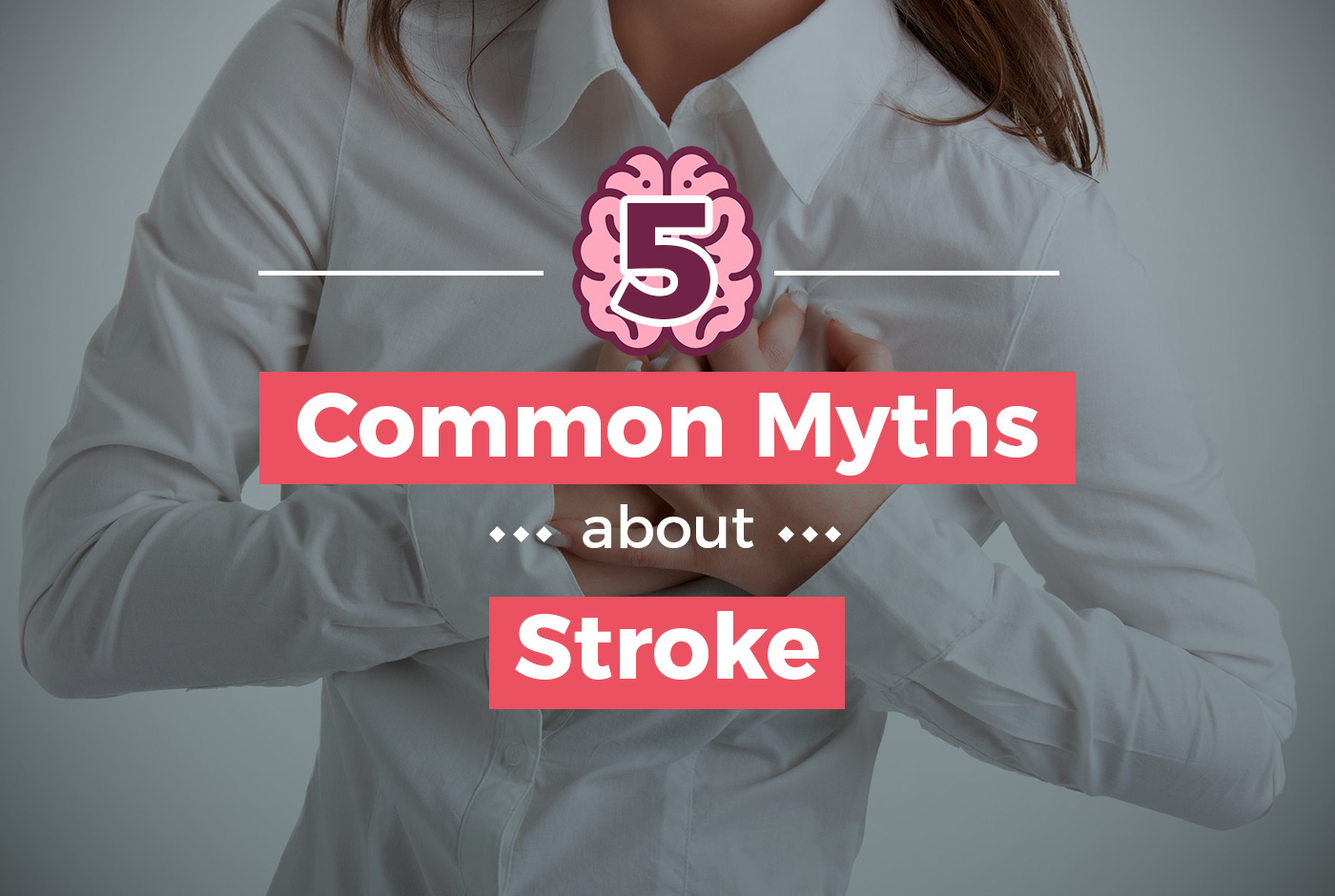5 Common Myths about Stroke

Are you stroke conscious enough?
Equip yourself with knowledge of stroke to prevent, respond and manage better when a stroke strikes.
Let’s debunk some of the common myths about stroke.
#1 Stroke is uncommon in Singapore
8,300 stroke cases were diagnosed in 2018 (Singapore Stroke Registry, 2018).
This number is expected to double by 2030.
One in six adults over the age of 25 is likely to suffer from a stroke in their lifetime.
#2 Stroke occurs in the heart
Stroke does not take place in the heart.
Stroke occurs when the blood flow to the brain is interrupted by either a blood clot or when an artery ruptures and bleeds internally into the brain.
This prevents oxygen from reaching the brain cells.
Brain cells start dying within 1 minute of oxygen deprivation and suffer irreversible damage within 3 minutes.
Obesity, high blood pressure, blood glucose and cholesterol levels, and smoking, increase the risk of blood clotting and ruptured arteries.
However, certain strokes are contributed by heart issues e.g. a blood clot which forms due to a highly irregular heartbeat.
Thus, most health screenings include an ECG.
#3 Stroke only happens to people who are older
While old age is a known risk factor of stroke, a stroke can happen to anyone regardless of age, including infants. Underlying health conditions, family history and external factors such as stress, smoking and lifestyle habits contribute to the risk of stroke.
According to the Singapore Stroke Registry report in 2018, there is a significant increase in stroke incidences in the 15-29 and 40-49 age groups.
Thus, do not dismiss any stroke symptoms simply because of a younger age.
#4 If the stroke symptoms fade away after a while, there is no need to seek for medical assistance.
These temporary stroke symptoms may be symptoms of a transient ischemic attack (TIA) - commonly known as a mini stroke.
TIA occurs when there is a temporary reduction in blood supply to a part of the brain.
These are warning signs before a full-blown stroke happens.
Do not “sleep the symptoms off”.
Early evaluation and treatment may help to prevent a full blown stroke from happening.
#5 Stroke cannot be prevented
While some factors such as age, gender and family history cannot be controlled, stroke can still be prevented by controlling risk factors such as body weight, blood pressure, blood sugar level and cholesterol.
It is never too young or too late to start taking care control of your health.
Find out what are the possible signs of stroke and the preventive measures you can start making here.
Also, there are some cases of stroke in young patients due to a bleed from a ruptured aneurysm in the brain; if you have two or more close relatives who have had brain aneurysms, consider discussing with a neurologist on screening options for early prevention.



















